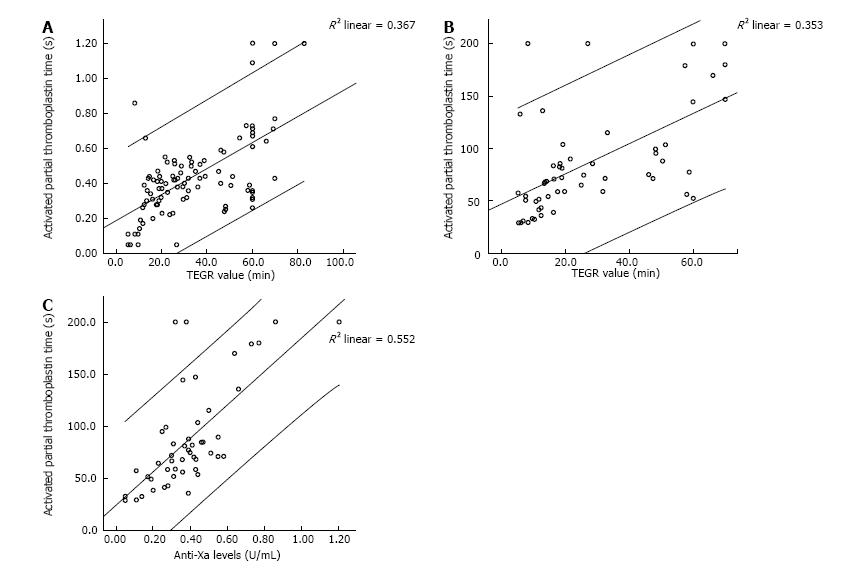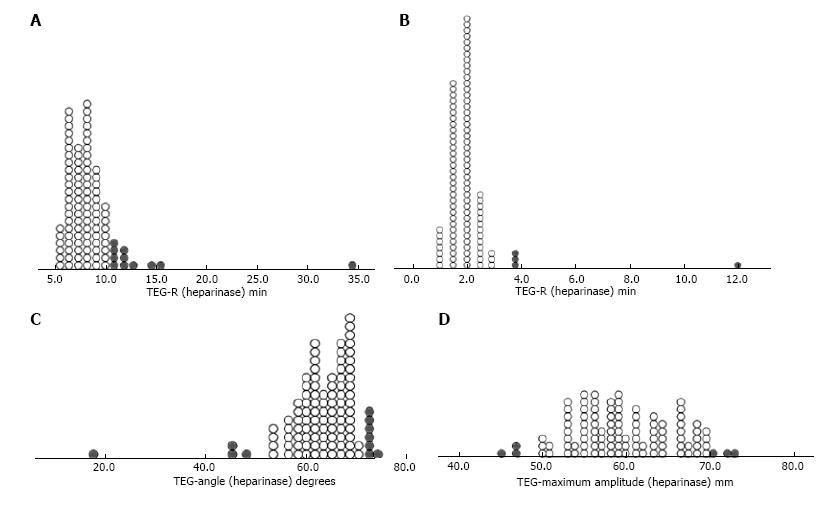Copyright
©The Author(s) 2017.
World J Cardiol. Sep 26, 2017; 9(9): 749-756
Published online Sep 26, 2017. doi: 10.4330/wjc.v9.i9.749
Published online Sep 26, 2017. doi: 10.4330/wjc.v9.i9.749
Figure 1 Scatterplots demonstrating correlation between standard measures of anticoagulation for patients on left ventricular assist device support.
The estimated linear regression line (line of best fit) is shown along with 95%CI for individual value predictions for (A) anti-Xa and TEG-R levels, (B) aPTT and TEG-R levels, and (C) aPTT and anti-Xa levels. The R2 values are shown alongside each panel (all P < 0.001). aPTT: Activated thromboplastin time; TEG: Thromboelastogram.
Figure 2 Correlation between platelet count and maximum amplitude after treatment with heparinase.
The estimated linear regression line (line of best fit along with 95%CI) is shown for platelet counts and TEG-MA (heparinase). Correlation coefficient of 0.541 (P < 0.001). TEG: Thromboelastogram.
Figure 3 Scatterplots demonstrating correlation between unfractionated heparin dose and (A) activated thromboplastin time (B) Anti-Xa levels and (C) thromboelastogram-R value.
The estimated linear regression line (line of best fit) is shown along with 95%CI for individual value predictions. aPTT: Activated thromboplastin time; TEG: Thromboelastogram.
Figure 4 Dot-density plots of thromboelastogram (heparinase) parameters R (panel A), K (panel B), angle (panel C) and maximum amplitude (panel D) showing distribution of individual values.
Abnormal values are represented by solid grey circles. TEG: Thromboelastogram.
- Citation: Bhatia AK, Yabrodi M, Carroll M, Bunting S, Kanter K, Maher KO, Deshpande SR. Utility and correlation of known anticoagulation parameters in the management of pediatric ventricular assist devices. World J Cardiol 2017; 9(9): 749-756
- URL: https://www.wjgnet.com/1949-8462/full/v9/i9/749.htm
- DOI: https://dx.doi.org/10.4330/wjc.v9.i9.749












